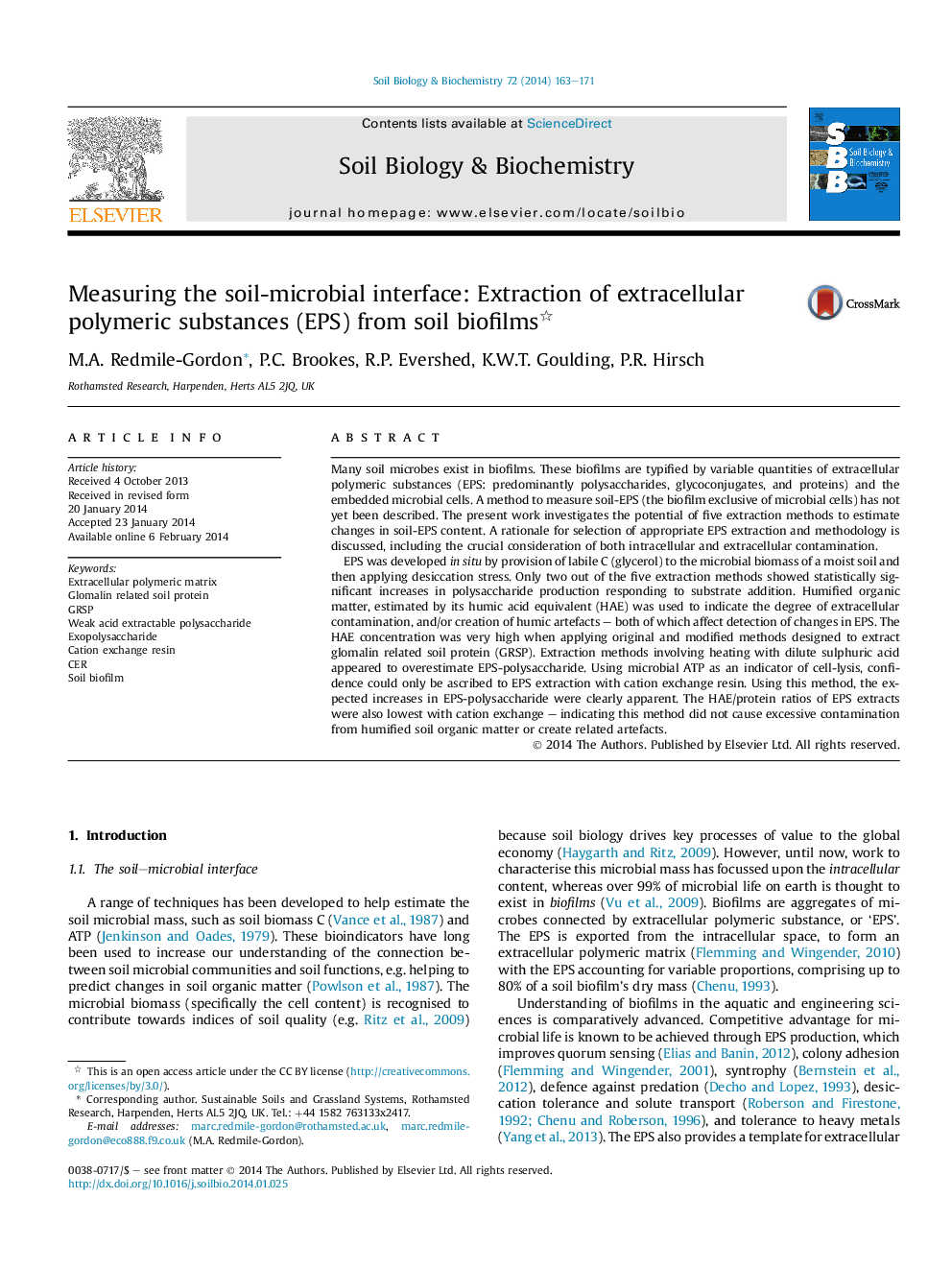| Article ID | Journal | Published Year | Pages | File Type |
|---|---|---|---|---|
| 8364907 | Soil Biology and Biochemistry | 2014 | 9 Pages |
Abstract
EPS was developed in situ by provision of labile C (glycerol) to the microbial biomass of a moist soil and then applying desiccation stress. Only two out of the five extraction methods showed statistically significant increases in polysaccharide production responding to substrate addition. Humified organic matter, estimated by its humic acid equivalent (HAE) was used to indicate the degree of extracellular contamination, and/or creation of humic artefacts - both of which affect detection of changes in EPS. The HAE concentration was very high when applying original and modified methods designed to extract glomalin related soil protein (GRSP). Extraction methods involving heating with dilute sulphuric acid appeared to overestimate EPS-polysaccharide. Using microbial ATP as an indicator of cell-lysis, confidence could only be ascribed to EPS extraction with cation exchange resin. Using this method, the expected increases in EPS-polysaccharide were clearly apparent. The HAE/protein ratios of EPS extracts were also lowest with cation exchange - indicating this method did not cause excessive contamination from humified soil organic matter or create related artefacts.
Related Topics
Life Sciences
Agricultural and Biological Sciences
Soil Science
Authors
M.A. Redmile-Gordon, P.C. Brookes, R.P. Evershed, K.W.T. Goulding, P.R. Hirsch,
